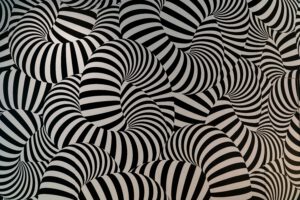
Advertisement strategies
Advertisement strategies Quantitative versus Qualitative strategy As a consumer, you encounter on average 3.000 Ads
"People accept the new easier with this concept"
Raymond Loewy was a successful French-American industrial designer who worked in the US. He designed not only locomotives, cars and chairs but also Logos for Lucky strike or the Shell. His mantra was to “Never leave well enough alone”. His designs were functional, simple and beloved. His approach non either the less made products look very different from what people were used to.
How did he bridge that gap between the rejection of the radically new and the beloved old?
Raymond Loewy’s approach was the MAYA concept, which he invented himself. The “Most Advanced Yet Accepted” was how he designed or redesigned. In practice, this meant a combination of the known and new forms, new combinations, new materials and so on.
What is most interesting, the MAYA concept does not only apply to design but to everything else. As I will state in my theories at the end of this article.
Shortly after the launch of Spotify, the playlist “Discover Weekly” was created. The objection was to only include unknown and new songs for the listener. It was designed in this exact way. But it bugged and so the algorithm added already played songs in the playlist. After Spotify fixed the Bug, the number of people listening to that playlist declined. Why was that? People liked to listen to new songs, but from time to time they just wanted something they already knew. So Spotify changed it back and the numbers rose again.
This shows that the MAYA concept applies not only to design but to everything that we perceive. No matter with what sense we experience it
Easier acceptance of the new
The MAYA concept could work so well because it combines two different patterns. Like a disguise, the overall pattern does seem to match the old one but with a few anomalies. When the most part of the pattern match, the not already existing information points could just be added without the dACC alarming the explicit system that something is not right. or even rejecting the new experience.
The excitement for the newly designed product could emerge from the fact that we humans generally like the new, the alternation, the variety.
Higher chance of remembering and learning
When designing a product, a service or anything else, the MAYA concept is worth looking into. Thereby it is important to take the project into consideration. In case of a redesign of a well-known brand or product, it could not only not work but cost a company millions of dollars. In those cases, the MAYA concept may not only be a nice tool to have but a necessity for the whole project. In other cases, it may be a nice tool to have. But it is always wise to keep the acceptance and that people generally reject the new, in the back of your mind.

Advertisement strategies Quantitative versus Qualitative strategy As a consumer, you encounter on average 3.000 Ads

Wie simple Kommunikation funktioniert Kleinere Marken spielen auf einem anderen Level als Große. Das ist

Die Zukunftstrends um als Marke relevant zu bleiben Was sind die Trends von Morgen, die
Get notified about new articles.
I will not spam you, I promise.